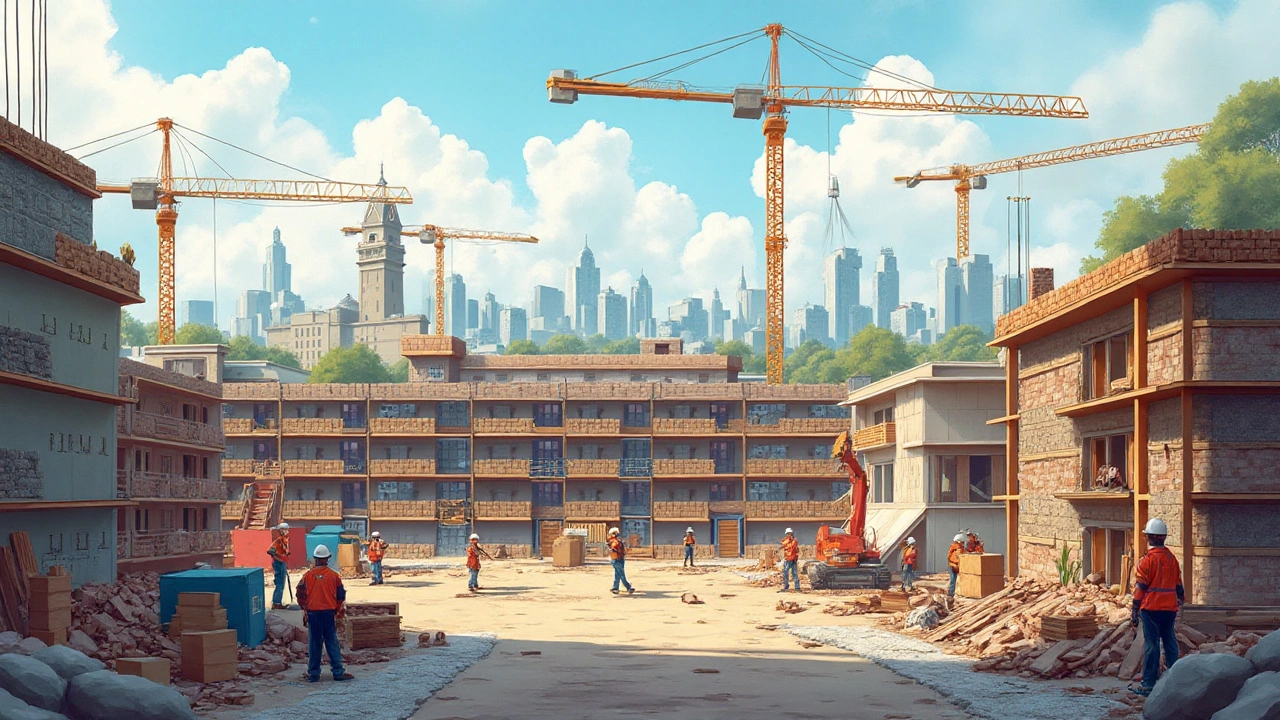Discover the key raw materials that serve as the foundation for construction around the world. This article explores five essential materials vital in building homes, infrastructures, and urban landscapes. Gain insight into their natural origins, significance in construction, and factors that influence their selection. Whether you're a professional or simply curious, enrich your understanding of the elements that shape our environments. Uncover interesting facts and practical tips for using these materials effectively.
Raw Materials Every Builder Should Know
When you start a construction project, the first thing on your checklist is the raw material list. Without the right base, even the best design will fall short. In this guide we break down the most common raw materials – concrete, steel, timber, and a few modern alternatives – and show you how to choose the right one for your job.
Concrete: The All‑Purpose Workhorse
Concrete is the backbone of foundations, floors, and walls. It’s strong, fire‑resistant and can be poured into almost any shape. For a typical residential build you’ll need a mix that meets the local code’s compressive strength, usually around 25‑30 MPa. To keep costs down, order only what you need and ask the supplier about ready‑mix options that include additives for faster curing.
Tip: When you order, ask for a slump test result. A slump of 75‑100 mm tells you the mix is workable without being too watery, which can weaken the final product.
Steel: Strength Where It Counts
Steel is unbeatable for structural frames, beam reinforcement, and roof trusses. It’s lightweight compared to concrete, yet it can carry massive loads. The two most common grades for residential work are S275 and S355 – the numbers refer to the minimum yield strength in MPa.
Buying smarter means checking the mill certificates for each batch. Those certificates confirm the steel meets the required standards and help you avoid costly re‑work later.
Timber: Warmth and Flexibility
Timber brings a natural look and easy handling to a build. Softwoods like spruce or pine are great for framing, while hardwoods such as oak are chosen for flooring and finish work. Moisture content is the biggest enemy – aim for timber that’s been kiln‑dried to 12‑15% moisture to prevent warping.
Don’t forget to treat any timber that will be exposed to the elements. A simple pressure‑treated finish can extend its life by years.
Modern Alternatives: Sustainable Options on the Rise
Eco‑friendly materials are gaining traction. Recycled aggregates replace part of the natural stone in concrete, cutting down on quarry waste. Similarly, engineered wood products like cross‑laminated timber (CLT) offer high strength with a smaller carbon footprint.
If your client cares about sustainability, highlight these options. They often qualify for green‑building certifications, which can add value to the final property.
Ready to pick the right raw materials for your next project? Start by listing the load‑bearing parts, check local building codes, then match each requirement with the material that offers the best strength‑to‑cost ratio. And don’t forget to review the supplier’s delivery schedule – a delayed cement batch can push the whole timeline back.
For a deeper dive, check out our post “Essential Raw Materials for Modern Construction: Complete Guide” which walks you through each material with real‑world examples and cost breakdowns. Armed with the right raw material knowledge, you’ll finish on time, stay on budget, and build something that lasts.
